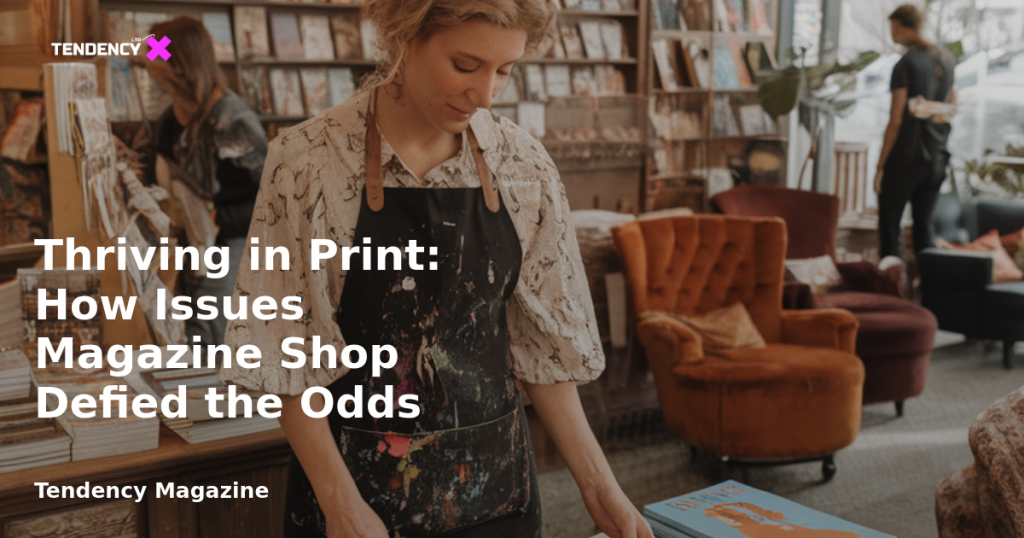Thriving in Print: How Issues Magazine Shop Defied the Odds

Introduction
In an age where digital media dominates, launching a print magazine store might seem counterintuitive. Yet, Nicola Hamilton, founder of Issues Magazine Shop in Toronto, has turned this seemingly outdated concept into a thriving business. Her journey from rejection by traditional lenders to becoming a creative hub for magazine enthusiasts is a testament to the power of passion, strategic planning, and community engagement.
Table of Contents
- A Vision Driven by Passion
- Crafting Dual Business Plans
- Leveraging Alternative Funding Sources
- Balancing Personal and Borrowed Funds
- Building a Strong Advisory Network
- Adapting Through Iteration
- Conclusion
A Vision Driven by Passion
Nicola Hamilton’s journey began with a “selfish” vision. As a magazine art director, she often found herself sourcing niche publications from outside Toronto or bringing them back from trips to cities like London and New York. Frustrated by the lack of a local store that catered to her interests, Nicola decided to create one herself. Her conviction that others shared her desire for a dedicated magazine shop became the foundation of her business model.
This deep understanding of her target audience helped Nicola navigate the challenges of securing funding. Traditional lenders were hesitant, skeptical of a business model centered on print magazines. However, Nicola’s unwavering belief in her vision allowed her to persist despite numerous rejections. Her story underscores the importance of knowing your customer base intimately, especially when that customer is you.
Crafting Dual Business Plans
One of the key strategies that Nicola employed was writing two distinct business plans. The first was tailored for potential lenders: straightforward, focused, and highlighting the core retail aspect of her business. This plan presented a simple model that funders could easily grasp.
The second plan was more comprehensive, encompassing event programming, consulting, and other creative revenue streams. While these elements were vital to her vision, they complicated financial projections and weren’t guaranteed sources of income. By keeping this fuller vision to herself, Nicola was able to secure initial funding without overwhelming potential investors with complexity.
Leveraging Alternative Funding Sources
Traditional bank loans weren’t the only option for Nicola. She tapped into alternative lending programs, such as Futurepreneur, which supports young entrepreneurs in Canada. Through this program, Nicola secured $60,000 in funding, with a portion coming from the Business Development Bank of Canada. This alternative route not only provided the necessary capital but also offered mentorship, helping Nicola refine her business plan and identify potential pitfalls.
Such programs offer more flexible terms than traditional bank loans, often including grace periods that allow businesses to establish cash flow before repayments begin. Entrepreneurs in various regions can explore similar opportunities, such as SBA loans in the United States or industry-specific grants, to support unconventional business ideas.
Balancing Personal and Borrowed Funds
Nicola matched the $60,000 loan with $60,000 of her own savings, creating a balanced 50-50 split between personal investment and borrowed funds. This approach not only demonstrated her commitment to the business but also provided her with greater control over decision-making. By investing her own money, Nicola reduced the perceived risk for lenders and retained the freedom to grow her business according to her vision.
Building a Strong Advisory Network
Before even applying for funding, Nicola reached out to industry experts, including Jeremy Leslie, founder of MagCulture in London. This connection proved invaluable, offering insights into industry dynamics, distributor contacts, and operational tips. Such advisory relationships can provide credibility and knowledge, strengthening funding applications and offering guidance during critical business decisions.
Local business owners in Toronto also contributed valuable market insights and operational advice. While these connections didn’t directly provide funding, they played a crucial role in Nicola’s success by enhancing her understanding of the local market and industry trends.
Adapting Through Iteration
Three years after opening, Issues Magazine Shop has evolved significantly beyond its initial business plan. Events, such as collage workshops and the Zine Shine festival, have become key revenue streams. Nicola’s continued work as a magazine art director has also led to a consulting arm of the business. These developments highlight the importance of an iterative approach, allowing businesses to pivot and expand in response to market demands.
Nicola’s intuition, grounded in industry expertise and a deep understanding of her customers, has been central to her success. Her approach emphasizes that while financial projections are important, a deep connection to your industry and customer base can guide more effective decision-making.
Conclusion
The story of Issues Magazine Shop is a powerful reminder that passion and strategic planning can overcome the odds, even in industries perceived as declining. By understanding her audience, crafting tailored business plans, leveraging alternative funding, and building a supportive network, Nicola Hamilton has turned a niche concept into a thriving business. Her journey offers valuable lessons for entrepreneurs seeking to defy conventional wisdom and succeed in challenging markets.
2025 Tendency LTD. All rights reserved.

